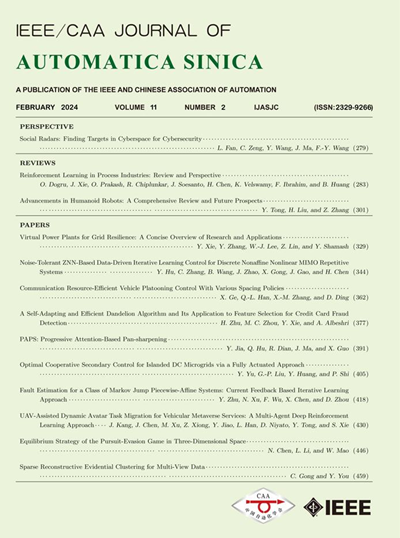联邦实验:基于llm的agent仿真和基于rag的领域对接驱动的生成因果推理
IF 19.2
1区 计算机科学
Q1 AUTOMATION & CONTROL SYSTEMS
引用次数: 0
摘要
计算实验方法是分析、设计、管理和集成复杂系统的重要工具。然而,在构建具有人类特征的智能体以形成人工智能社会方面,出现了一个重大挑战。智能体建模通常包括四个层次:1)智能体的自主性特征,如感知、行为和决策;2)智能体的进化特征,如有限理性、异质性和学习进化;3)主体的社会特征,如互动、合作、竞争等;4)代理的突现特征,例如,与环境或监管策略的博弈。传统的建模技术主要来源于ABMs(基于代理的模型),并结合了各种新兴技术(如机器学习、大数据和社交网络),这些技术可以增强建模能力,同时放大复杂性[1]。本文章由计算机程序翻译,如有差异,请以英文原文为准。
Federated Experiments: Generative Causal Inference Powered by LLM-Based Agents Simulation and RAG-Based Domain Docking
Computational experiments method is an essential tool for analyzing, designing, managing, and integrating complex systems. However, a significant challenge arises in constructing agents with human-like characteristics to form an AI society. Agent modeling typically encompasses four levels: 1) The autonomy features of agents, e.g., perception, behavior, and decision-making; 2) The evolutionary features of agents, e.g., bounded rationality, heterogeneity, and learning evolution; 3) The social features of agents, e.g., interaction, cooperation, and competition; 4) The emergent features of agents, e.g., gaming with environments or regulatory strategies. Traditional modeling techniques primarily derive from ABMs (Agent-based Models) and incorporate various emerging technologies (e.g., machine learning, big data, and social networks), which can enhance modeling capabilities, while amplifying the complexity [1].
求助全文
通过发布文献求助,成功后即可免费获取论文全文。
去求助
来源期刊

Ieee-Caa Journal of Automatica Sinica
Engineering-Control and Systems Engineering
CiteScore
23.50
自引率
11.00%
发文量
880
期刊介绍:
The IEEE/CAA Journal of Automatica Sinica is a reputable journal that publishes high-quality papers in English on original theoretical/experimental research and development in the field of automation. The journal covers a wide range of topics including automatic control, artificial intelligence and intelligent control, systems theory and engineering, pattern recognition and intelligent systems, automation engineering and applications, information processing and information systems, network-based automation, robotics, sensing and measurement, and navigation, guidance, and control.
Additionally, the journal is abstracted/indexed in several prominent databases including SCIE (Science Citation Index Expanded), EI (Engineering Index), Inspec, Scopus, SCImago, DBLP, CNKI (China National Knowledge Infrastructure), CSCD (Chinese Science Citation Database), and IEEE Xplore.
 求助内容:
求助内容: 应助结果提醒方式:
应助结果提醒方式:


